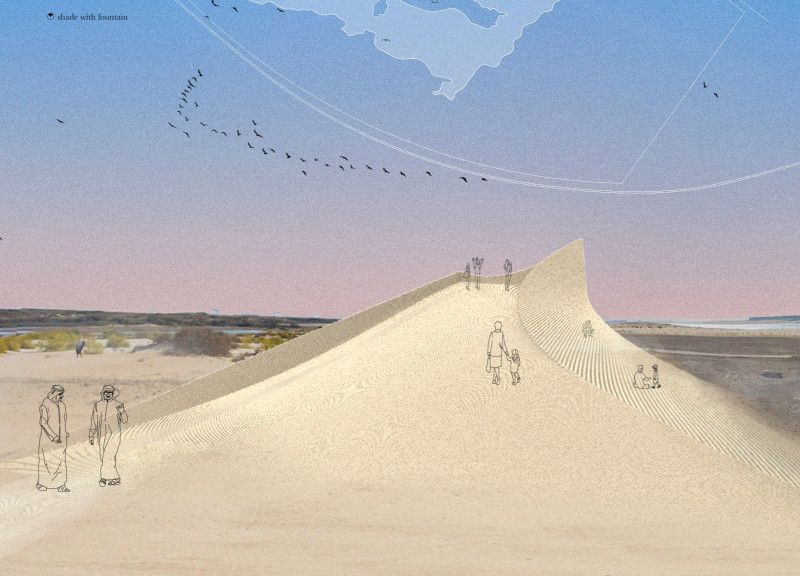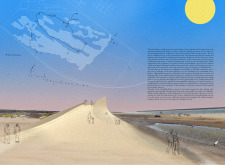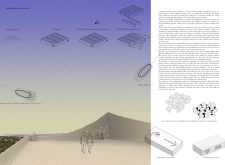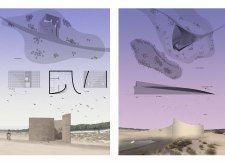5 key facts about this project
The project functions as a space for recreation, education, and community engagement. Users can explore integrated pathways and viewing points that promote an understanding of the local ecosystem. The design features a main structure that serves as a visitor center, complemented by auxiliary facilities and observation towers. These elements encourage visitors to connect with nature and foster ecological awareness.
Innovative Materials and Construction Techniques
This project stands out due to its use of bio-concrete, a construction material comprising local sand mixed with a bacterial solution. This approach allows for the on-site production of durable bricks, demonstrating a commitment to sustainability and ecological design. By utilizing the local environment as a resource, the project effectively reduces the need for transportation, further minimizing its carbon footprint. The incorporation of recycled materials throughout the design also reflects a dedication to responsible sourcing and waste reduction.
Another unique feature is the project’s emphasis on landscape integration. The topography incorporates gentle, undulating mounds that mimic natural landforms, allowing the architecture to blend seamlessly with the environment. Communal spaces designed for social interaction reinforce a sense of community while providing educational opportunities through interpretative signage and organized activities that highlight local flora and fauna.
User-Centric Design and Accessibility
The project prioritizes user interaction and accessibility, ensuring that all visitors can navigate the site comfortably. Pathways are designed for universal access, facilitating entry to various structures and scenic view points. The layout encourages exploration and experiential learning, guiding visitors through the natural habitat while minimizing disturbance to wildlife.
In summary, this architectural project illustrates a comprehensive approach to designing within an ecological context, showcasing unique construction methods and a strong focus on community engagement. To gain deeper insights into the architectural plans, sections, and additional design ideas, interested readers are encouraged to explore the project presentation for detailed information.


























